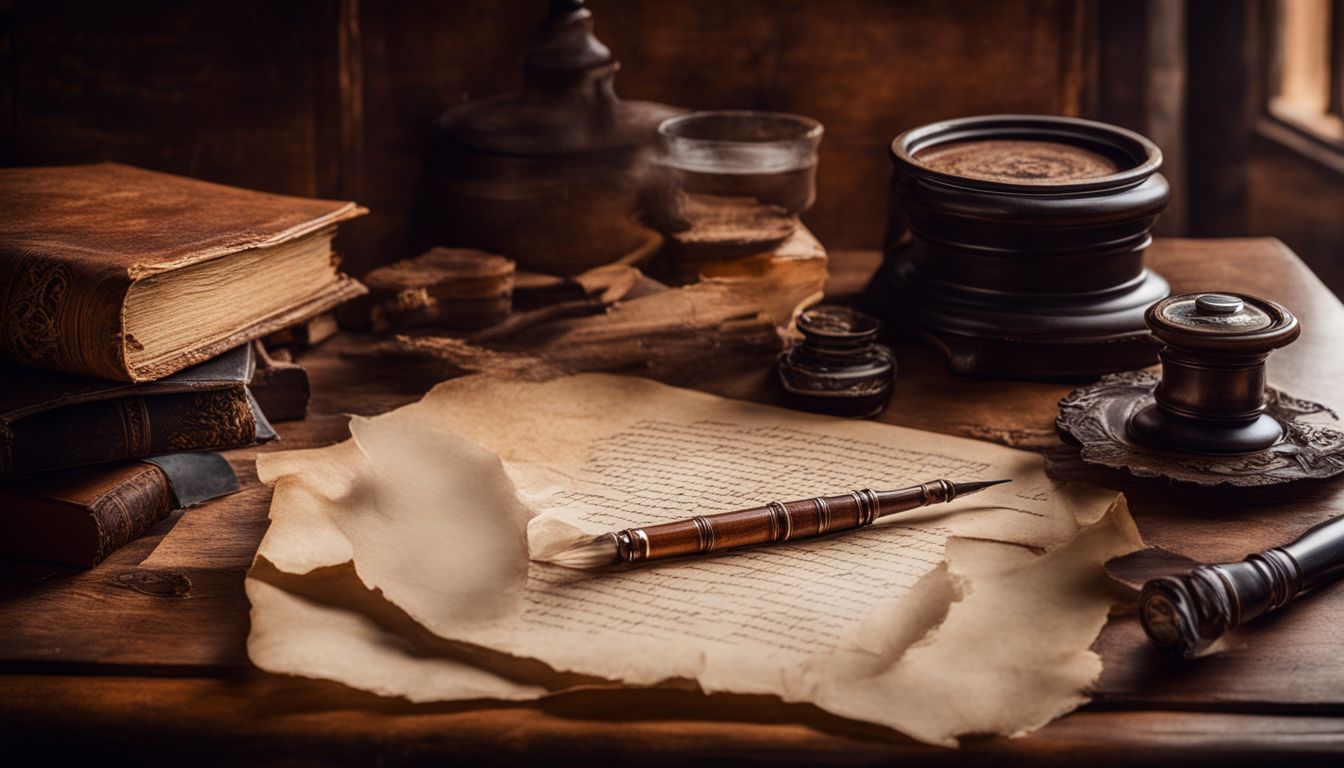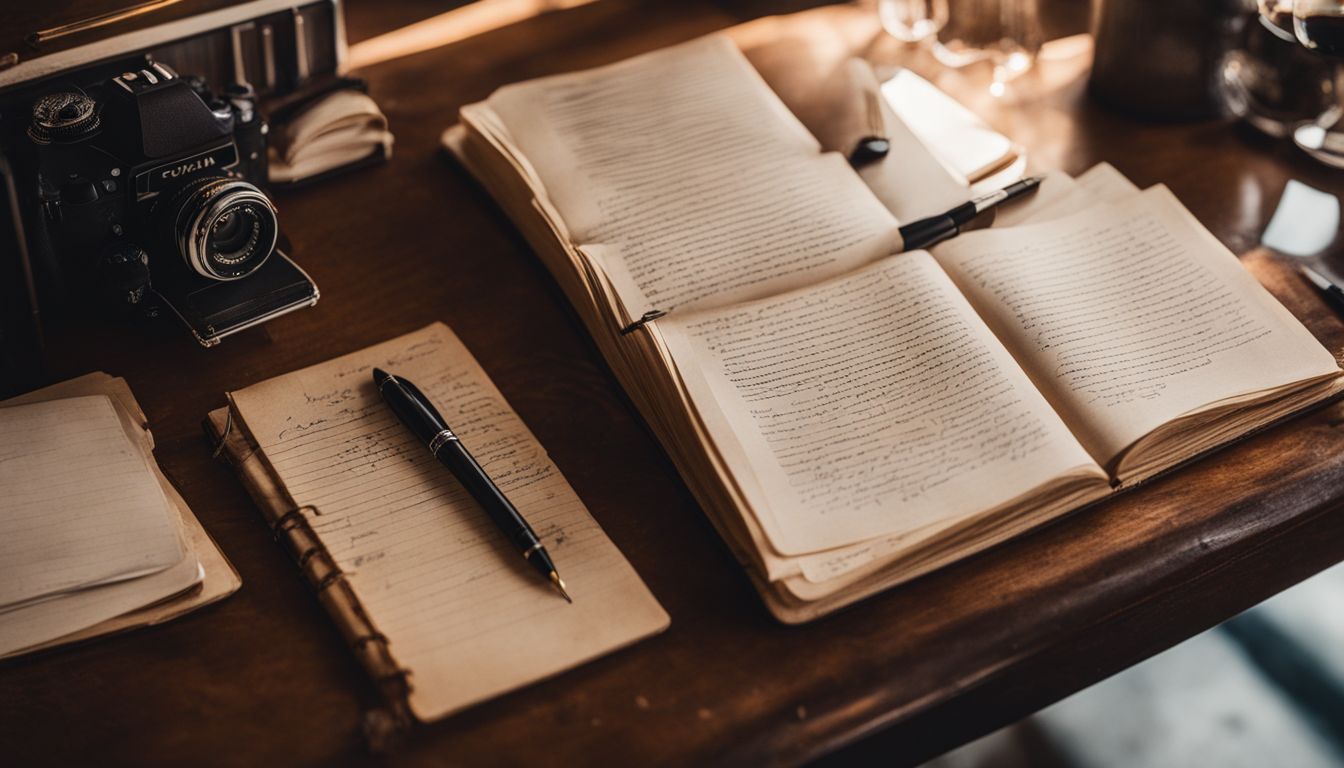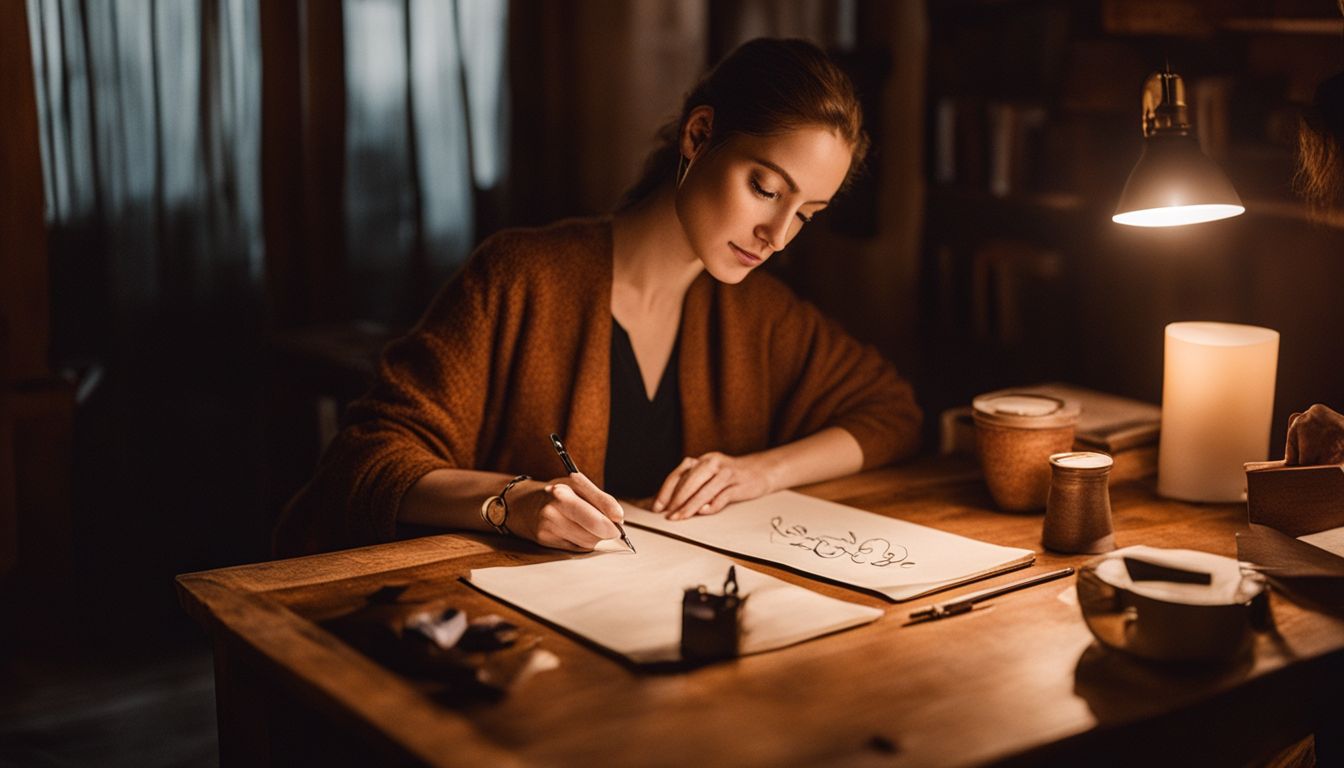Ever find yourself furiously scribbling with a pen that just won’t cooperate, trying to coax out a single drop of ink? You’re not alone in that frustration. Recently, I delved into the backstory of our everyday companions—the ballpoint pens—and what I uncovered was nothing short of captivating.
Let’s journey together through their storied past and explore how these once-drippy instruments transformed into the reliable tools we count on for jotting down everything from grocery lists to grand ideas.
Key Takeaways
- John J. Loud patented the first ballpoint pen in 1888, but it was László Jozsef Bíró who improved the design in the 1930s for everyday writing.
- The ballpoint pen became popular after WWII when companies like Reynolds and Bic made them reliable and affordable.
- Ball pens are so important that they have been used by astronauts in space due to their ability to work in zero gravity.
- Artists now use ballpoint pens as a medium to create detailed artworks, showing how versatile these pens can be.
- To keep a ballpoint pen working well, people should cap it when not using it, clean the tip often, and store it horizontally.
Early Developments in Writing Instruments Prior to Ballpoint Pens

Humans have always looked for ways to record their thoughts. Long before ball pens, there were quills dipped in ink. These feathers from birds like geese made writing possible but they required constant dipping and a steady hand.
Ink spills were common and it was hard to write on the go.
Then came the fountain pen, with its own ink reservoir. This was a game-changer! No more dipping needed – these pens could carry enough ink for several pages of writing. The nibs split to guide ink onto paper through capillary action.
Fountain pens became popular because they were easier and cleaner than quills, but they still leaked sometimes and clogged often.
People kept dreaming of better writing tools even as fountain pens improved over time.. And that’s where the story of ballpoint pens begins!
The Inception of the Ballpoint Pen

In 1888, John J. Loud was granted the first patent for a ballpoint pen, but it wasn’t until László Jozsef Bíró‘s modernization of the design in the 1930s that the ballpoint pen as we know it today began to take shape.
Bíró’s innovation led to mass production and popularization of this revolutionary writing instrument.
John J. Loud’s initial patent in 1888
I often think about how we take simple things for granted, like the ballpoint pen. Back in 1888, John J. Loud got a patent for such a pen. He wanted something that could write on rough surfaces like wood and leather.
His idea was cool but it didn’t really catch on for making everyday notes.
Loud’s invention laid the groundwork though—it was an early step toward our modern pens. The problem was his version couldn’t do the day-to-day writing everyone needed. But that didn’t stop others from dreaming bigger and better.
This quest led László Jozsef Bíró to take up the mantle and push ballpoint design into a new era, which leads us right into another interesting chapter of our story..
László Jozsef Bíró’s modernization of the ballpoint pen
Moving from Loud’s initial concept, László Jozsef Bíró brought the ballpoint pen into the modern age. His vision began with newspaper ink, which dried quickly and didn’t smudge.
He wanted that same fast-drying power in a pen. To make this happen, he designed a new kind of pen tip with a tiny metal ball bearing. This clever design let thick ink flow smoothly onto paper without making a mess.
Bíró’s breakthrough wasn’t just about quick-drying ink; it was also how the pen delivered that ink to paper. Earlier pens needed gravity to work right, but not his creation. His improved model used capillary action so that no matter how you held the pen—upright or tilted—the ink would keep coming out evenly.
In 1944, Bíró’s updated ballpoint pens hit the market and changed writing forever. They called them ‘biros’ after their inventor—a name still used today!
The Evolution of Modern Ballpoint Pens
Ballpoint pen technology advanced significantly after World War II, leading to the creation of more reliable and efficient writing instruments. These improvements made ballpoint pens more accessible and practical for everyday use, revolutionizing the way people write and work.
Ballpoint pen advancements post-WWII
After WWII, ballpoint pen advancements skyrocketed, with companies like Reynolds and Bic leading the charge. The Reynolds Rocket became the first successful commercial ballpoint pen in 1945, capturing the market with its reliability..
Marcel Bich’s design patents and mass production revolutionized the industry, making ballpoint pens a ubiquitous writing tool worldwide. Furthermore, ink composition evolved to address issues related to light sensitivity and fading over time..
This post-war surge propelled ballpoint pens into daily life as an essential writing utensil, marking a significant turning point in their history.
The incorporation of improved materials and manufacturing techniques bolstered their durability as well.. Broadening usage from official documentation to personal note-taking contributed significantly to their widespread adoption.
The incorporation of ballpoint pens in daily life
Ballpoint pens have seamlessly integrated into daily life, proving to be versatile tools for various tasks. From jotting down notes in meetings to signing important documents, their reliability has made them indispensable.
In fact, the Bic Cristal, a popular ballpoint pen model, holds the title of the world’s most widely sold pen; more than 100 billion units were sold as of September 2006. This widespread use reflects how ballpoint pens have become essential companions in education, work environments, and household activities.
Moreover, the ballpoint pen fits diverse needs due to its adaptability – it efficiently scribbles on different surfaces ranging from paper to cardboard. Its convenience is not only found in school or office settings but also extends to other areas like creating art pieces using these pens’ unique ink qualities.
Specialized Use of Ballpoint Pens
The ballpoint pen has found specialized use in unique areas such as space exploration and art. From the British Royal Air Force’s adoption of the ballpoint pen for high-altitude flights to artists like Lennie Mace and James Mylne using it as a medium, the versatility of this writing utensil is truly remarkable.
Use in space exploration
Ballpoint pens have played a crucial role in space exploration, with astronaut Pedro Duque testing the pen’s functionality in zero-gravity environments. This led to the development of the Fisher Space Pen, capable of writing in space and reportedly underwater – a testament to its adaptability in extreme conditions.
The technology behind the Fisher Space Pen emerged from advancements made by Fisher pens in the United States, enabling astronauts and researchers to record information accurately despite microgravity challenges.
The ballpoint pen’s reliability has facilitated documentation and note-taking during various missions, demonstrating its significance beyond traditional writing applications.
Use as an art medium
Moving from the infinite realms of space exploration to the intricate world of art, ballpoint pens have found their way into the creative hands of artists. The use of ballpoint pens as an art medium has blossomed, enabling artists to showcase their creativity in new and captivating ways.
From precision line work to photo-realistic artwork, ballpoint pen art has captivated audiences with its detailed and versatile nature.
Artists harness these humble writing utensils to create stunning pieces, incorporating shading and detail that once seemed impossible with a simple pen. Ballpoint pen art has transcended traditional drawing, expanding into mediums such as sculpture and mixed media — capturing attention with its unique textures and tones that other mediums struggle to replicate.
Tips for Maintaining Your Ballpoint Pen
- Keep your pen capped when not in use to prevent the ink from drying out.
- Clean the tip of the pen regularly to remove any buildup or clumps that could affect smooth writing.
- Store your pens horizontally to ensure even distribution of ink and prevent clogging.
- Avoid exposing your pens to extreme temperatures, as this can impact the quality and consistency of the ink.
- Use high – quality refills or replace the cartridge when the ink starts to fade, ensuring a continuous, reliable writing experience.
- When not in use for an extended period, remove the refill and clean the pen to prevent dried ink from affecting its performance in the future.
The Impact and Significance of the Ballpoint Pen
The ballpoint pen has left an indelible mark on modern society, from breaking Guinness World Records to revolutionizing the way we write and communicate. To learn more about the impact and significance of this iconic writing instrument, continue reading our blog.
Guinness World Records
The Guinness World Records includes a record for the largest ballpoint pen, measuring 5.5 meters long and weighing 37.23 kilograms, made in India. The Bic Cristal holds the title of the world’s most popular pen, with the 100 billionth one sold in September 2006, and it sells 57 per second!
The pen’s role in modern society
From Guinness World Records to the pen’s role in modern society, it’s fascinating to see how a simple writing instrument has played such a critical part in our daily lives. Whether jotting down notes, signing documents, or expressing creativity through art, the ballpoint pen has seamlessly integrated into various facets of contemporary existence.
Its ubiquity is observable – with approximately 57 units sold per second worldwide in 2006 and the Bic Cristal reigning as one of the most widely distributed pens globally. The BIC version improved quality while achieving mass production, facilitating its pervasive presence in modern society and collections like New York City’s Museum of Modern Art.
Moreover, not only does this everyday tool serve practical purposes, but it also symbolizes human connection and communication on a global scale. From official correspondence to educational settings and personal expression through letter writing or journaling, the ballpoint pen serves as an extension of thought onto paper – transcending geographical borders and cultural differences.
Conclusion
In conclusion, the ballpoint pen has a rich history filled with innovation and ingenuity. From its humble beginnings with inventors like John J. Loud and László Jozsef Bíró to its widespread adoption in modern society, the evolution of the ballpoint pen has been remarkable.
Its impact on various industries, from space exploration to art, showcases its versatility and significance. With advancements in ink composition addressing previous limitations, the ballpoint pen continues to be an essential tool for everyday writing needs.
For more detailed guidance on keeping your writing smooth and uninterrupted, check out our helpful tips for maintaining your ballpoint pen.
FAQs
1. Who first created the ballpoint pen?
László Bíró, a journalist from Hungary, invented the modern ballpoint pen with his brother György Bíró. They called it the ‘birome,’ and it changed how we write!
2. What made Milton Reynolds’ pens so popular?
Milton Reynolds started selling his own version of the ballpoint in America through his company, Reynolds International Pen Company. His pens were a big hit at Gimbels Department Store because they wrote smoothly and dried fast.
3. How is Parker Pens linked to ballpoints?
Parker Pens saw what was happening with ballpoints and wanted in! They introduced their famous model known as ‘the Jotter’, which became widely loved for its reliability and style.
4. Did BIC change the game for pens?
Absolutely! The BIC company took over Eversharp Co.’s spot in selling affordable pens when they launched the iconic BIC Cristal – it’s everywhere now!
5. Can you create art with a ballpoint pen?
Yes, you can make amazing artwork! There are incredible artists who use just a simple bic pen or other types of ballpoints to create detailed drawings that will blow your mind.
6. I’ve heard about space pens; what’s special about them?
Space pens have ink that works even in zero gravity! Astronauts needed something reliable to write with up in space, where regular pens wouldn’t work – these did the trick.




Leave a Reply
You must be logged in to post a comment.